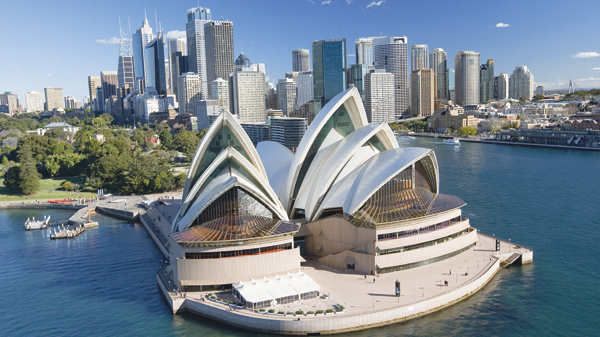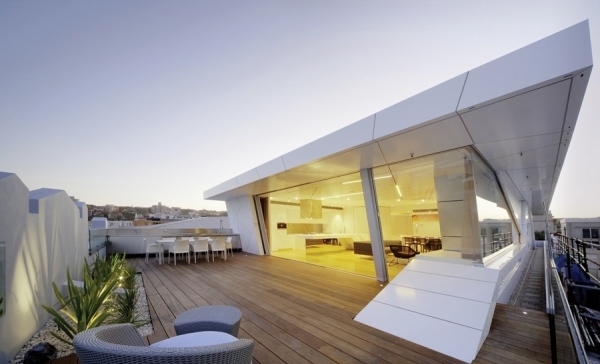The birth of modern-day Sydney began under less-than-auspicious circumstances in the early days of 1788, the year when 11 British tall ships – comprising six convict ships, three store ships and two naval vessels – sailed into the waters of Port Jackson in south-eastern Australia. Following an exhaustive eight-month journey, the flotilla finally dropped anchor at the majestic harbour that would eventually come to be known as Sydney Cove. In all, some 1,000 souls – including 850 convicts – came ashore, planting a flag and claiming the land for the British Empire. Thus was set up a fledgling settlement that would be the first of the many penal colonies that would soon dot the continent.
During the late 1700s and early 1800s, the British established farms across the country, while the discovery of gold in 1851 drew ever more settlers. Over the next 80 years, until the end of transportation, more than 160,000 convicted criminals would be sent to make a new life in what was then seen as the most remote of destinations.
Even today, the bulk of the New South Wales capital’s population are descendants of these hardly settlers, though foreign immigrants now account for roughly 75 percent of its annual population growth. Boasting a population of just over five million, the city’s contemporary incarnation is a far cry from the rudimentary village of its penal colony days. Now among the key financial hubs in the Asia-Pacific region, Sydney not only numbers among the priciest cities to live in globally, it also boasts a thriving tourism industry, with more than 3.5 million international visitors descending upon the city every year.
Undoubtedly topping the must-visit lists of many of these intrepid travellers is the Sydney Opera House, one of Australia’s truly iconic landmarks and among the most photographed buildings in the world. Deemed a UNESCO World Heritage Site in 2007, its sail-like roof – though seemingly white at a distance – is actually made from more than a million cream-hued interlocking tiles. A true labour of love, it took 10,000 construction workers a staggering 14 years to complete. When it was finally opened (by Queen Elizabeth II in 1973), the project had cost a total of AU$102 million, more than 14 times its original AU$7 million budget.
Occupying a prime location in Sydney Harbour, this opera house welcomes some 10.9 million visitors annually. They are drawn not only by the world-class musical performances hosted within, but also stunning views out across Sydney Harbour Bridge, Darling Harbour, the central business district and The Rocks, a particularly bustling nearby neighbourhood. Discerning epicureans should also make the time to dine at the Bennelong Restaurant, an eatery dubbed “the Holy Grail of Australian restaurants” by The New York Times. Fronted by floor-to-ceiling windows, its panoramic outlook and culinary treats have made it one of Sydney’s most popular fine-dining experiences.
Directly across the waters of the Circular Quay is yet another of the cosmopolitan metropolis’ signature sights – the Sydney Harbour Bridge. The widest long-span and fifth-longest spanning-arch such construction the world has ever seen, its arch-based design has seen the structure colloquially dubbed ‘The Coathanger’ by many locals. Interestingly, the day before it opened in 1932, the bridge’s strength was tested by placing 96 train engines along its length. The initial toll then was just three pence for a horse and rider and six pence for a car. Today, that sum has soared to four dollars during peak hours, yet it remains the main route for commuters crossing between northern and southern Sydney.
For tourists, though, it affords a thoroughly unique sightseeing means in the form of the BridgeClimb, an opportunity for daring visitors to scale the metallic arches to the summit of the bridge morning, noon and night. Though perhaps not for the faint of heart – or those suffering from acrophobia – those hearty hikers brave enough to reach its apex are gifted with breath-taking views of the city below.
One of these sights, lying just under its north reaches, is Luna Park, a heritage-listed amusement park fronted by a gigantic smiling face. Welcoming visitors since 1935, the vintage appeal of this quirky venue remains largely unchanged despite several million-dollar upgrades over the years. A sure-fire hit for families, there are enough attractions and rides to keep the little ones entertained for the day.
Another option for family-friendly fun – Taronga Zoo – lies a short 15-minute drive away. Once again abutting Sydney Harbour, this 100-year-old institution boasts a sterling reputation for conservation and rehabilitation. In all, more than 4,000 animals across 350 different species can be found here, many of them officially endangered in the wild. Roughly a quarter are indigenous to the continent, including the requisite koalas and kangaroos. A vast complex, it takes at least three hours to cover its acreage, with the zoo even offering a sleep-over option as part of its Roar and Snore tour.
No trip to Sydney would be complete, however, without a visit to one of the countless sandy beaches that lie just outside the city proper. The most famous of these is, undoubtedly, Bondi Beach, a wildly popular spot for surfing, swimming and sunbathing throughout the year for locals and tourists alike. Dotted with an expansive selection of cafes, restaurants and retail venues, it’s a world away from the urban jungle lying just a few kilometres distant.
It’s also the starting point for a scenic coastal walk hugging the cliffs between Bondi and neighbouring Coogee beach. An easy six-kilometre stroll, it passes through several smaller beaches, bays and ocean rockpools. If you’re lucky, you might even have the opportunity to glimpse the occasional pod of whales or dolphins frolicking in the waves off the coast, so be sure to bring a camera along.














